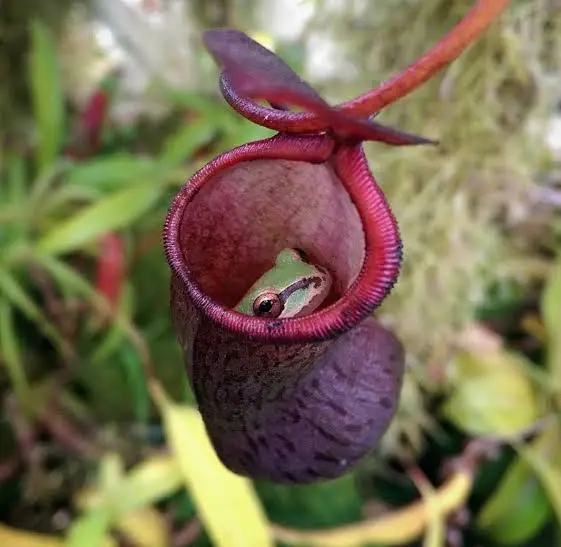Nepenthes, widely known as the tropical pitcher plant, is one of the most captivating carnivorous plants in the world. Found mainly in Southeast Asia, this plant attracts researchers and nature lovers with its elegant shape, vibrant colors, and unique hunting strategy. Its natural ability to trap and digest insects makes it an important species in many tropical ecosystems.
A Carnivorous Plant With a Natural Trap
Nepenthes features a modified leaf structure shaped like a pitcher. This pitcher contains a liquid that acts as a digestive enzyme. Insects are lured by the plant’s scent and bright colors. Once they land on the slippery rim of the pitcher, they fall inside and are unable to escape. The trapped insects eventually break down into nutrients that help the plant grow in poor soil conditions.
Incredible Diversity Across Tropical Regions
There are more than one hundred species of Nepenthes spread across countries such as Indonesia, Malaysia, the Philippines, and Thailand. Each species has its own characteristics. Some pitchers are small and delicate, while others can grow large enough to trap small animals. Their colors range from green and red to deep purple, making them one of the most visually striking plants in the tropics.
Adapted to Survive in Nutrient Poor Environments
Nepenthes usually grows in soil that lacks essential nutrients. Instead of relying on the ground for nourishment, the plant supplements its needs by digesting insects. This adaptation allows it to thrive in environments where many other plants cannot survive, such as acidic bogs, mountain slopes, and tropical rainforests.
A Delicate Balance in the Ecosystem
Although Nepenthes is a carnivorous species, it also plays a vital role in supporting other forms of wildlife. Many animals, including tree shrews and certain insects, use the plant as a shelter or a source of food. This unique relationship highlights the plant’s ecological importance in tropical habitats.
Conservation Challenges
Several species of Nepenthes are threatened by habitat loss, climate change, and illegal collection. Conservation efforts are essential to protect these rare plants and preserve the biodiversity of tropical forests. Many botanical gardens and research institutes now cultivate Nepenthes to prevent the extinction of endangered species.
Final Thoughts
Nepenthes is more than just a carnivorous plant. It is a symbol of nature’s creativity and resilience. With its beautiful pitcher design, remarkable adaptations, and ecological importance, this tropical plant remains one of the most fascinating botanical treasures in the world. Learning about Nepenthes offers a deeper appreciation for the diversity and complexity of plant life on our planet.





